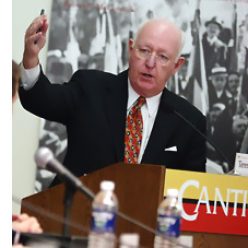I moved recently to Annapolis, settling into a house on the Left Bank of Spa Creek, in the heart of the Maritime Republic of Eastport, on the seditious side of the self-declared “Sailing Capital of the U.S.”
I couldn’t be happier: I took the water taxi to the U.S. Boatshows, walked to the victorious end of the annual Slaughter-across-the-Water Tug of War (final score MRE: 5, Old-Line Annapolis, 2,) and look forward to enjoying the annual Eastport Yacht Club Christmas Lights Parade outside my window. I even lucked into a window table at Joss on a Saturday night after a Navy home game.
But with winter approaching, when only the certifiably lunatic frostbiters will be out on the water, I began to think about whether Annapolis deserves its self-annointed “Sailing Capital” status. After all, Newport, R.I. makes the same claim, as do other, larger eastern seaports.
Annapolis clearly has a lot going for it beyond its rich history and beauty: a robust sailing and boating community, an active racing and cruising calendar, The U.S. Naval Academy, fine yacht clubs, a busy maritime industry, some world-famous sailors and yacht designers, the selected site of the National Sailing Hall of Fame and all the egos cruising up and down Ego Alley. No surprise that sailors are drawn here.
But having sailed my boat up and down the east coast for years, I have found many more welcoming harbors. Edgartown on Martha’s Vineyard greets the visiting yachtsman with a sprawling anchorage and a floating water barge where, at no cost, you can replenish your tanks and wash your decks after a long sail.
Drop a hook in Cuttyhunk in the Elizabeth Islands and a floating raw bar will come alongside to tempt you with local oysters, clams and lobster. In Great Salt Pond on Block Island, an operatic gentleman with a fine baritone voice has been known to sing Italian arias as he passes through the anchorage in a launch named Andiamo selling fresh baked goods, orange juice and on Sundays, The New York Times.
Annapolis, on the other hand, charges visitors up to $35 per night for a mooring, more for a slip, and prohibits any dingy above 12 feet from tying up at the public landings at the foot of city streets. No seafood vendors, with or without operatic accompaniment, are permitted without a specific agreement with the city. There are limited transient slips in the commercial marinas and a handful more at the yacht clubs for members of reciprocal clubs. But if you are hoping to get a slip during the boat shows, forgetaboutit.
The restaurants are excellent, but precious few offer any dock space. Fortunately, the water taxi is prompt and cheerful, but with Fawcetts moved away and Stevens Hardware gone, there are no chandleries within walking distance of Ego Alley.
A true sailing capital ought to open its arms more to visiting sailors and boaters, to say nothing of hungry locals who might want to cruise to dinner in a runabout over 12 feet.
“There’s no real welcome mat for visiting yachtsmen,” says former Delegate Dick D’Amato, a board member of Historic Annapolis. “You pick up a mooring, get in your dingy and it is catch-as-catch-can.” The closest grocery, he pointed out, is a taxi ride away.
Space is clearly at a premium in Annapolis harbor, so this is not an easy problem to solve. But perhaps the city planners can come up with something creative to attract and accommodate more sailors — and their dollars — as they redesign the city dock and the heart of the nation’s “sailing capital” for the 21st century.
